April 7, 2023 —
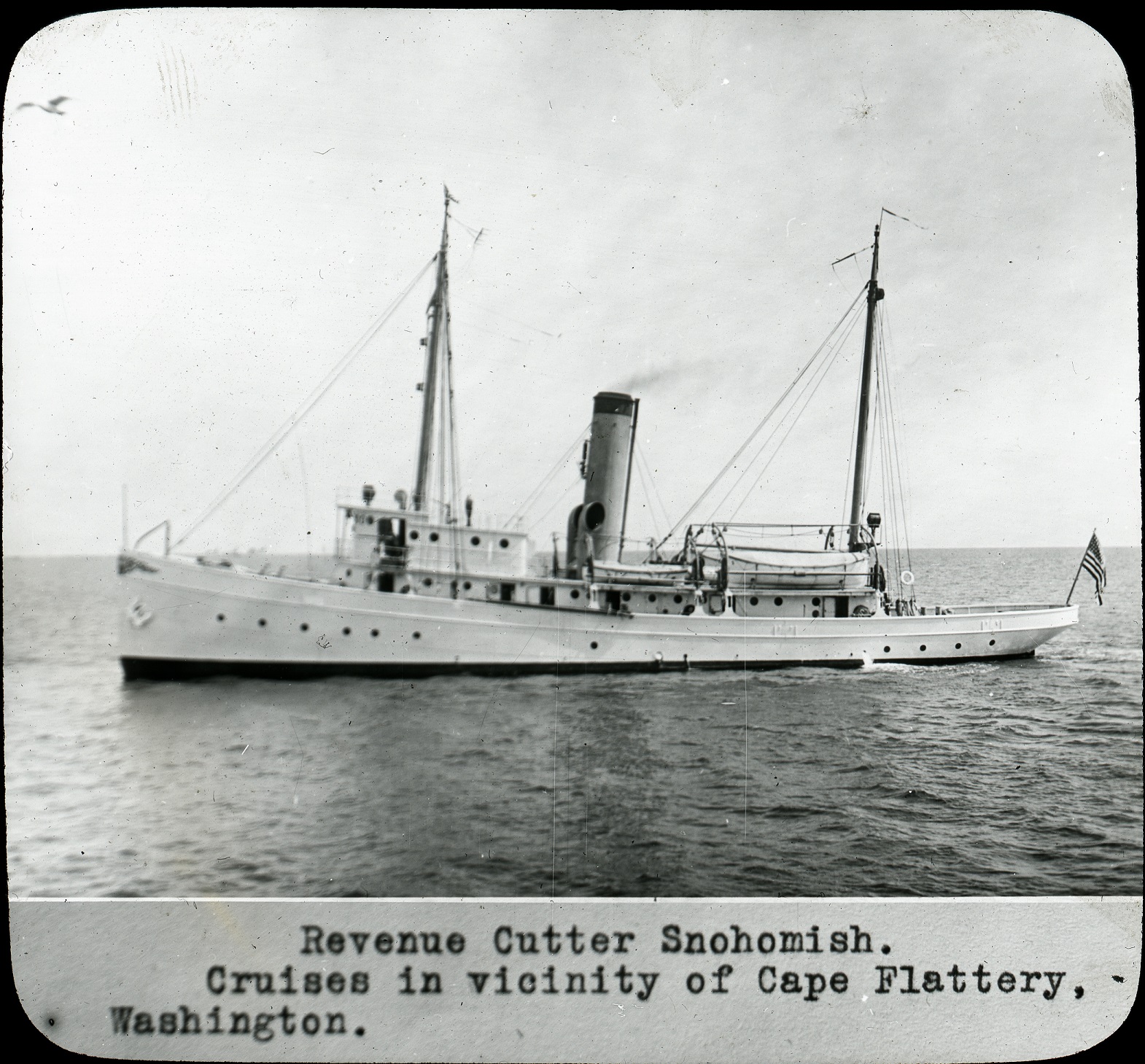 Among all the vessels built as c
Among all the vessels built as c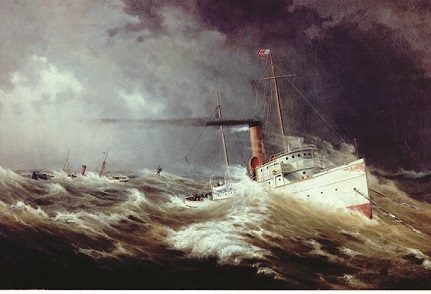 utters for either the U.S. Revenue Cutter Service or Coast Guard, one of the most unique was the Cutter Snohomish.
utters for either the U.S. Revenue Cutter Service or Coast Guard, one of the most unique was the Cutter Snohomish.
The cutter was built in 1908 as a direct result of Congressional legislation passed to address a shortage of maritime rescue resources in the Pacific Northwest. This shortage was tragically demonstrated by the 1906 wreck of the steamship Valencia on the rugged and sparsely settled coastline of British Columbia. The steamship’s 136 passengers and crew lost their lives because no means of rescue existed at that time from seaward or shore. The Revenue Cuter Service responded by building a new tug-type cutter to be stationed in the area to assist the U.S. Life-Saving Service with area shipwrecks.
The Snohomish was built by the Pusey & Jones Shipbuilding Company in Wilmington, Delaware specifically for the Pacific Northwest coast. The cutter was designed as a steam-powered coastal/open ocean tugboat with 880 tons displacement, 152-foot overall length, 29-foot beam, and nearly 16-foot draft; roughly the same size a modern Fast Response Cutter. Because of its intended operating area, which could include some very remote locations, the Snohomish was also provided with a then state-of-the-art wireless radio outfit.
On Dec. 10, 1908, after commissioning, the Snohomish began its journey from Norfolk, Virginia, to the cutter’s assigned operating area of the Pacific Northwest. Because the Panama Canal did not exist in 1908, Snohomish had to steam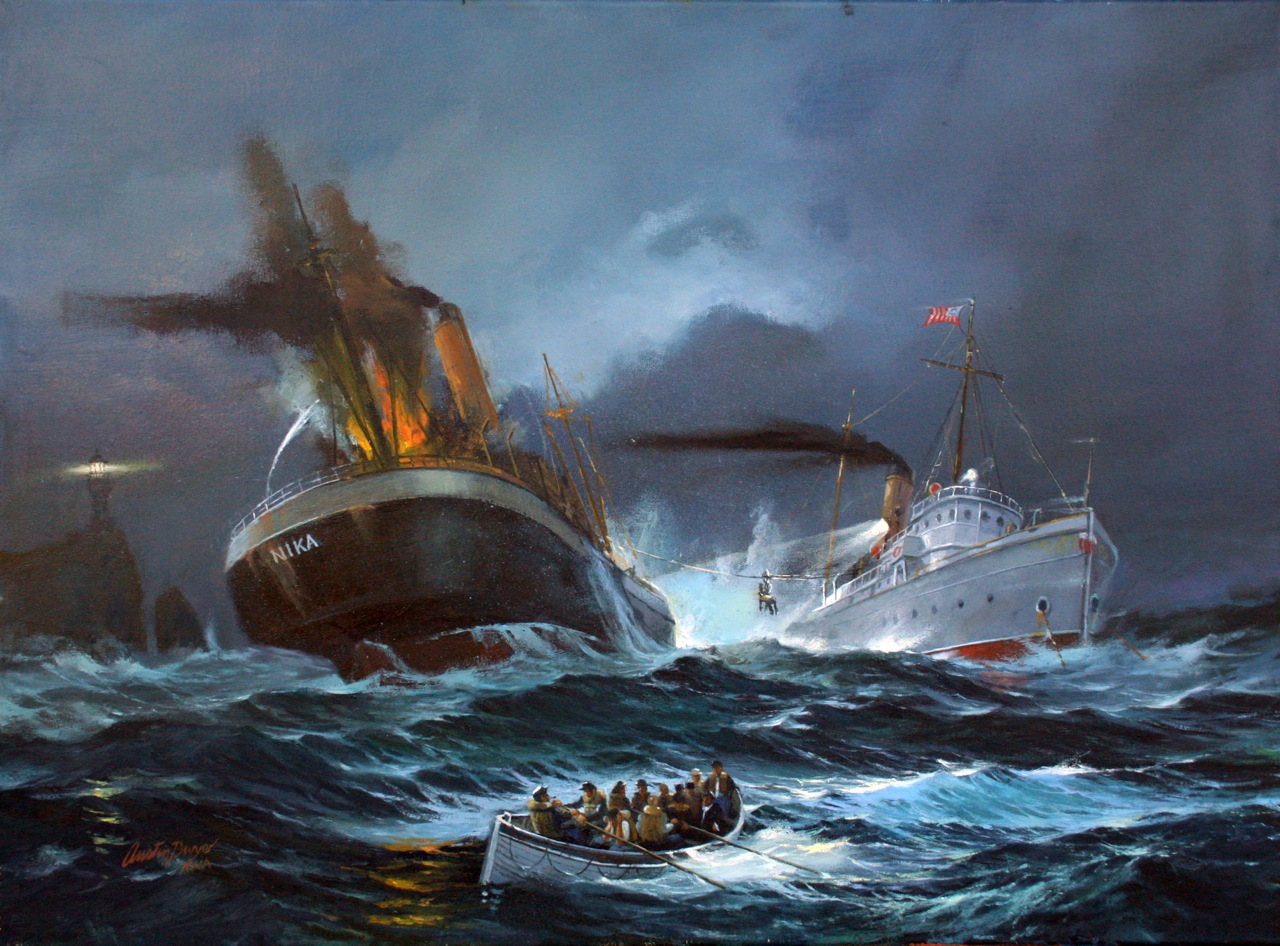 south around Cape Horn via the Straits of Magellan. The cutter entered the Pacific Ocean and steamed north along the coasts of South and Central America to the West Coast. In transit, the ship encountered stormy seas that flooded several compartments and damaged structures and equipment. On March 28, 1909, the cutter arrived at the Revenue Cutter Service depot at Port Townsend on Puget Sound, Washington after a voyage of 118 days.
south around Cape Horn via the Straits of Magellan. The cutter entered the Pacific Ocean and steamed north along the coasts of South and Central America to the West Coast. In transit, the ship encountered stormy seas that flooded several compartments and damaged structures and equipment. On March 28, 1909, the cutter arrived at the Revenue Cutter Service depot at Port Townsend on Puget Sound, Washington after a voyage of 118 days.
The primary cutter base of operations for Puget Sound area was Port Townsend, Washington. However, the Snohomish was assigned to operate out of a sub-station established at Ediz Hook across from Port Angeles. At this location, the ship’s crew constructed a small supply dock and storehouse for storing coal, rope, marine hardware and ship’s boats. In 1911, the ship’s crew built an additional boathouse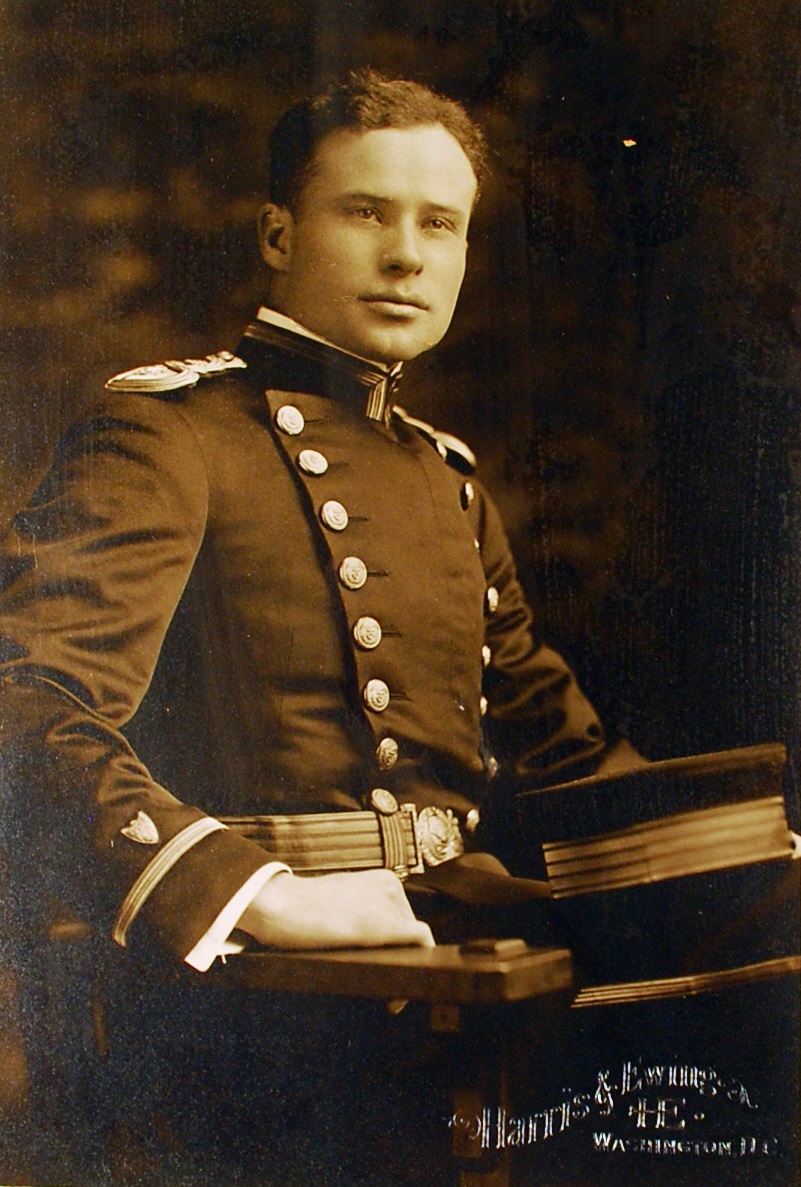 plus a small marine railway at Ediz Hook. Out of this base, the Snohomish would sail out to Neah Bay and the area around Tatoosh Island to patrol for ships in distress.
plus a small marine railway at Ediz Hook. Out of this base, the Snohomish would sail out to Neah Bay and the area around Tatoosh Island to patrol for ships in distress.
Not long after the 1915 merger of the Revenue Cutter and Life-Saving services to form the U.S. Coast Guard, the U.S. entered World War I. Like other wartime situations, the Coast Guard became a part of the U.S. Navy, and nearly all the cutters changed their operational command to the Navy. For the Snohomish, this required a change in armament from a small one-pounder gun to a larger three-inch bow gun, along with additions to the cutter’s crew, and a temporary reassignment to the East Coast.
On Feb. 16, 1918, the Snohomish left Puget Sound Naval Shipyard towing a Navy coal barge, and proceeded south down to the Panama Canal, arriving there March 27. Two days later, after passin g through the canal, the cutter headed to Key West, Florida, arriving on April 6th. Snohomish then traveled to Norfolk, Virginia, arriving on April 15th, almost 10 years to the day from the cutter’s first departure from Norfolk to the West Coast. Over the next year, Snohomish became an auxiliary tug for the Navy and escorted convoys of 110-foot submarine chasers from Bermuda across the Atlantic to the Azores. Like other military units, the cutter suffered an outbreak of the infamous 1918 Spanish Influenza while in Bermuda, losing one crewmember at the hospital in Bermuda. So many of the crew were incapacitated by the flu that Snohomish could not sail for some weeks.
g through the canal, the cutter headed to Key West, Florida, arriving on April 6th. Snohomish then traveled to Norfolk, Virginia, arriving on April 15th, almost 10 years to the day from the cutter’s first departure from Norfolk to the West Coast. Over the next year, Snohomish became an auxiliary tug for the Navy and escorted convoys of 110-foot submarine chasers from Bermuda across the Atlantic to the Azores. Like other military units, the cutter suffered an outbreak of the infamous 1918 Spanish Influenza while in Bermuda, losing one crewmember at the hospital in Bermuda. So many of the crew were incapacitated by the flu that Snohomish could not sail for some weeks.
After the war ended, in February 1919, Snohomish departed the East Coast to return to its homeport in Puget Sound. It steamed south to the Panama Canal, where it was employed in tugboat duties at the Coco Solo Naval Station on the Atlantic side of the Canal. In March, Snohomish left the Canal bound for the West Coast in company with some 110-foot sub-chasers. It arrived at Port Angeles in mid-April 1919 and completed voyage repairs and removed its wartime armament before returning to its peacetime duties.
Over its years of service, the Snohomish responded to many vessels standing into danger, or had run aground. The cutter’s most famous rescue mission was that for the Nika, a lumber carrier that ran aground on Feb. 25, 1923, in the 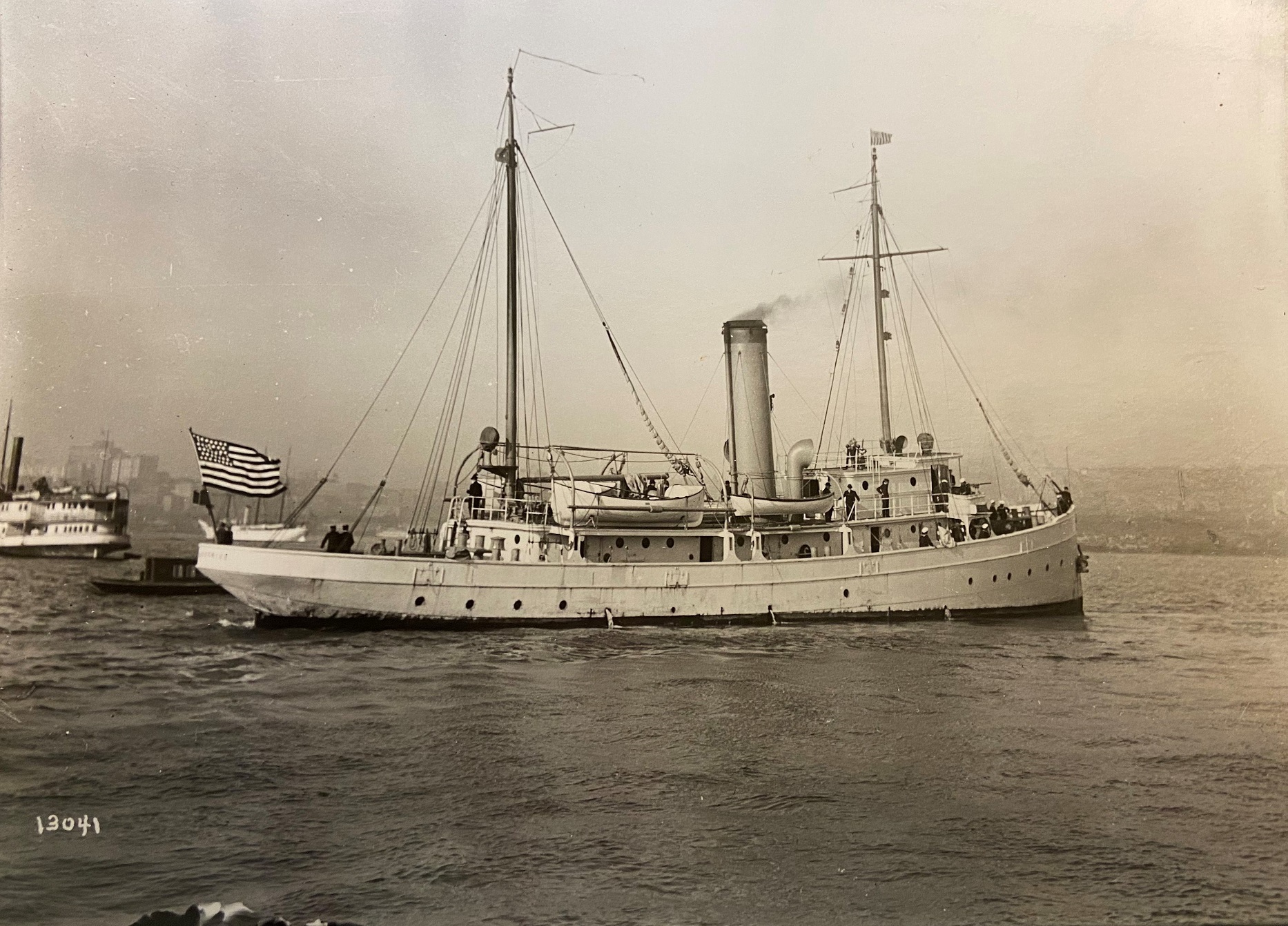 Straits of Juan de Fuca. Snohomish’s crew tied a simple life ring to a three-inch line to transfer all the Nika’s crew from their ship to the Snohomish, which was carefully positioned about 20 feet off the stern of the Nika. For this rescue, performed in severe gale conditions, Snohomish’s command
Straits of Juan de Fuca. Snohomish’s crew tied a simple life ring to a three-inch line to transfer all the Nika’s crew from their ship to the Snohomish, which was carefully positioned about 20 feet off the stern of the Nika. For this rescue, performed in severe gale conditions, Snohomish’s command ing officer, Lt. Cmdr. Henry Hemingway, was awarded the Gold Life-Saving Medal.
ing officer, Lt. Cmdr. Henry Hemingway, was awarded the Gold Life-Saving Medal.
Over the next 15 years, until its decommissioning in 1934, the Snohomish again took up its wreck patrol duties at the Puget Sound entrance. During Prohibition, it was employed on offshore patrol duties to track down the so-called “mother ships” from Canada, bringing down the bulk cargoes of illegal liquor for off-loading onto faster rumrunner speedboats. Due to the Snohomish’s slow maximum speed, however, it was not very effective in this role. The cutter was also employed as a safety escort on the annual Olympia, Washington, to Juneau, Alaska, motor cruiser race. The race of 908 miles one way, saw many motor yachts come to grief with engine failure or accidental grounding.
Following Snohomish’s World War I service and long trans-ocean voyages, the cutter experienced frequent mechanical breakdowns and hull deterioration. In 1933, near the end of Prohibition, these problems repeatedly interrupted its ability to carry out missions. At the same time, many of the crew left the service, or deserted altogether. These problems likely led the Coast Guard to decommission the Snohomish in October 1934 and offer the ship for sale. In December of that year, it was sold to Island Tug & Barge Company of Victoria, British Columbia.
Snohomish continued in local commercial service with its original name as a tug until 1947, when it was used for its last long-distance tow from British Columbia down through the Panama Canal to Buenos Aires, Argentina. There, in 1948, it was again sold; this time to the Argentinian Navy as the Mataras. Unfortunately, there is no information available as to the cutter’s fate in Argentina.